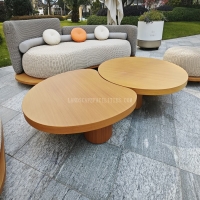Welcome to the website for landscape facilities products and knowledge.
What are the most critical factors influencing the table’s resistance to chipping or cracking?
The durability of a table against chipping and cracking depends on several interconnected factors that determine its long-term structural integrity and appearance. Material selection stands as the primary consideration, with hardwoods like oak and maple offering superior resistance compared to softer woods or engineered materials. The density and natural grain pattern of the material significantly influence how it responds to impact and stress.
The protective finish applied to the table surface creates a crucial barrier against damage. High-quality polyurethane, epoxy resin, or catalyzed lacquer finishes provide exceptional protection, with thickness and application technique playing vital roles in their effectiveness. Multiple thin coats typically outperform single thick applications, creating a more resilient surface that absorbs impacts without transferring stress to the underlying material.
Construction quality and joinery methods directly impact a table's resistance to cracking. Properly engineered tables account for wood movement through seasonal changes, utilizing techniques like breadboard ends, floating panels, and appropriate fastening systems that allow for natural expansion and contraction. Tables with rigid constructions that don't accommodate these natural movements are prone to developing stress cracks over time.
Environmental factors including humidity levels, temperature fluctuations, and exposure to direct sunlight significantly affect a table's susceptibility to damage. Maintaining stable humidity between 40-50% helps prevent wood from expanding or contracting excessively, which can lead to cracking. UV protection through finishes or placement away from direct sunlight preserves both color and structural integrity.
Daily use patterns and maintenance practices complete the durability equation. Using protective pads under heavy objects, avoiding direct impact from sharp items, and regular cleaning with appropriate products all contribute to preserving the table's surface. The design elements themselves, including edge profiles, corner treatments, and leg placement, can either increase vulnerability or enhance resistance to damage depending on their execution.
Understanding these critical factors enables informed decisions when selecting, using, and maintaining tables for both residential and commercial settings, ensuring longevity and preserved appearance through years of service.
Related search:

Recommendation
Elliptical metal outdoor table with nested design, resembling wood grain, round table